author:jk,
As the global cryptocurrency infrastructure gradually matures, users are interested in on-chain assets"Realistic Availability"The demand is also growing. However, how to truly use the assets on the chain in real life has always been a concern for crypto users.
Encrypted payment card (also known as "U card"),It is in this context that quietly rises - they not only open up the "last mile" of asset use, but also quietly reshape people's understanding of wallets, PayFi and payment networks.
Whether it isDirectly bind mobile payment software to consume, or throughStaking Bitcoin to lend stablecoinsFlexible response to market conditions, the gameplay of encrypted payment cards is becoming more and more diverse. Among them, some rely on exchanges and focus on stability and cashback rewards, and some are based on wallets or agreements that emphasize on-chain native assets and composability. Today's crypto payment cards have become a practical and increasingly mature crypto finance entrance.
In order to clarify the real user experience and differences of this type of product,Based on a large amount of information collection and user feedback from social platforms, the top ten most representative crypto payment cards in the current market have been deeply disassembled.Including Bybit, Bitget, SafePal, Morph, Infini, Coinbase, Nexo, MetaMask, 1inch and RedotPay,Combined with its application threshold, support assets, rate structure, cashback mechanism and on-chain interaction capabilities, systematic review and horizontal comparison are carried out, help readers find the "pass" that suits them best in this rapidly evolving field.
A newbie who is suitable for Chinese users, U card
Bybit card: the most widely used exchange U card
Bybit’s recent virtual debit card is now availableNo annual fee, low thresholdThe characteristics of the social platform are quite popular recently. This card supports mainland KYC certification and the processing process is free.
The application process is quite simple: the user first needs to register a Bybit account, and after completing the registration, he will conduct real-name authentication on the platform. It is reported that using a mainland Chinese identity can pass KYC review. After passing the certification, find the "Card" option on the homepage and enter the application page. Then the user can select different regions to open the card:
-
Select Australia as the card opening area, and select this option,No need to provide a proof of address for a virtual card. After submitting the application, the review time will take about 5 to 7 working days. Under this version, the default currency of the card is USD.
-
Users can also choose the European Economic Area (EEA), but they need to pay attention to the EEA versionProof of address of the European Economic Area is required.Such as water and electricity bills, credit card bills, etc. in European addresses. The default currency of the card under this version is Euro.
In terms of use, the card can be managed in the Bybit App, and the virtual card can be directly boundFor consumption such as Apple Pay, Google Pay, etc., you can use it by swiping your card in the world.
Twitter recently reported that Australian version of virtual cardRecently, it is impossible to bind Alipay and WeChat Pay for consumption, This is mainly due to excessive use of cashback activities by hair removal studios, etc. However, there are also users who say that Alipay’s touch can conduct transactions, which may vary depending on the risk control of each user’s account. If you need to bind these payment tools, you can consider applying for the Oka version. According to Twitter information,The Ouka version can still be used normally with Alipay and other products.
In terms of rates, Bybit card is quite competitive:The transaction fee is between 0.9% and 3%.It depends on factors such as the card opening area, transaction currency, and consumption location. Some transactions may incur additional intermediary handling fees (such as platforms such as Alipay).The platform is currently carrying out new card promotions, and users can enjoy a 10% cashback discount when spending.
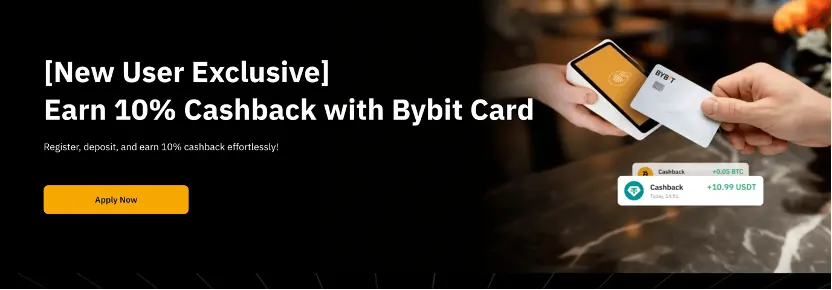
It should be noted that consumption in different regions may incur additional currency conversion fees and other costs.For example, if the user swipes a card for a merchant using the Japanese yen, the final fee may include the exchange rate converted from USD/Euro to Japanese yen.This part also needs to be borne by the user. Overall, this card has obvious advantages in terms of being linked to the exchange and is one of the more convenient choices in the market at present.
Bitget card: Exclusive payment card provided for VIP
Compared with traditional bank cards, the virtual debit cards launched by Bitget also use "no annual fee" and "direct consumption USDT" as their main selling points, attracting the attention of many crypto users.The card currently supports two card organization options: UnionPay and Mastercard.Cover the actual needs in different regions and consumption scenarios.
Bitget cardThe issuer is the DCS (DeCard) brand, which is a locally regulated issuing bank in SingaporeAccording to market news, most of the equity has been acquired by Bitget. Although DeCard also provides card application services for individual users, this path usually requires applicants to have Singapore local identity authentication and mobile phone number, with a high threshold.Therefore, applying through the Bitget platform is a more feasible way.
It should be noted that the Bitget card is not currently open to all users for applications. According to the current rules of the platform, only users who have reached the VIP level are eligible for application. One common threshold is that the account balance must reach USDT or equivalent assets. Therefore, the target user group of this card is more targeted at high net worth or active trading users.
Currently, Bitget card also supports binding operations such as Apple Pay, Google Pay, Alipay, WeChat, etc., its function focuses on combining the liquidity release of on-chain assets with daily consumption. It should be noted that the types of Bitget cards are different. The Bitget card on the official website is a Visa card with US dollars as the underlying settlement currency, while the more popular Bitget Youxiang Payment Card on Twitter is a Mastercard/UnitedPay card with Singapore dollar as the underlying settlement currency, which is slightly different. According to the user experience on Twitter, this card can be used smoothly in all places that support Mastercard.
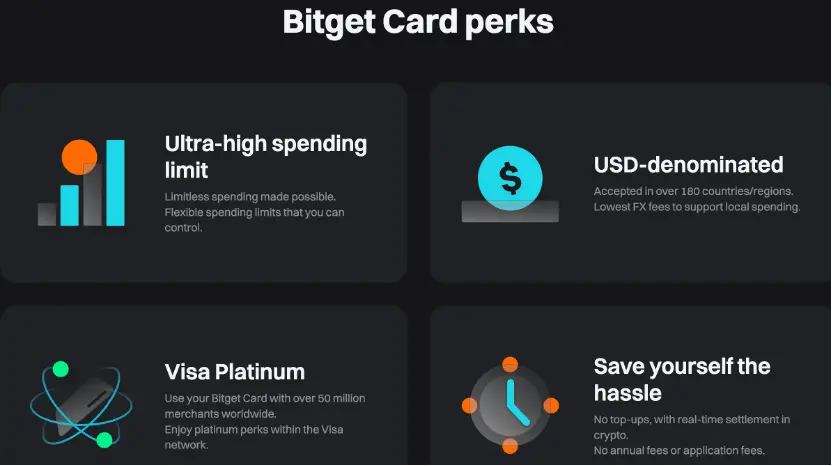 At the same time, Bitget stated on the homepage that there will be opportunities for BGB cashback in the future.
At the same time, Bitget stated on the homepage that there will be opportunities for BGB cashback in the future.
From the perspective of the rate,The transaction fee for Bitget card is also 0.9% to 3%., mainly affected by factors such as the transaction currency, consumption location, and whether currency exchange is involved. For example, if transactions settled in USDT in non-USD/SGD areas may trigger certain currency exchange fees. In addition, different payment channels (such as UnionPay and Mastercard) may also affect the account time and intermediate handling fees. At the same time, Alipay and WeChat Pay will also charge handling fees for transactions with a quota of more than 300 yuan.
Overall, Bitget Card, as a virtual financial product derived from the exchange, provides users with another channel for using crypto assets in real consumption scenarios, especially suitable for user groups with large asset scale and frequent cross-border consumption.
SafePal x Fiat 24: Not just a U card, but also a compliant bank account
Unlike the traditional "virtual card", SafePal provides a more integrated crypto financial service, which is supported by the Swiss registered bank Fiat 24.After completing identity authentication and address verification, the user will obtain a real European bank account (including IBAN), can be used for international payments, withdrawals, and even debit card consumption associated with the account.

The application process is slightly more complicated than other cards. Users need to first enter the relevant modules in the SafePal wallet interface, provided that the account area supports the service (currently including mainland China). Next, users need to transfer a small amount of ETH on the Arbitrum network to mint identity NFTs as necessary credentials to obtain Fiat 24 banking services. After completing KYC and address authentication,The system will assign a Fiat 24 bank account and can synchronize the application for a Mastercard debit card bound to the account.In 2023, some users received Visa cards, and the current mainstream version is Mastercard.
This card also supports binding to Apple Pay, Google Pay, Alipay and WeChat Pay, etc.The underlying settlement currencies support the euro, US dollar, Swiss franc and RMB.
In terms of rates,The comprehensive rate range for SafePal debit cards is 1% to 3%.Depend on the specific transaction structure. The account withdrawal process is about 1% handling fee, while consumption of the same currency will no longer be charged extra fees, which is good news for users with consumption needs in the above four currencies. Once the fiat balance in the bank card is exhausted, the system will automatically deduct fees from the bound cryptocurrency balance to realize the consumption of crypto assets.
at the same time,Because the user obtains a complete bank account, the account supports international transfer to major banks, as well as international digital banks such as ifast, Wise, and Revolut.There are many experiments and rate assessments on social platforms.
Compared with card products dominated by other exchanges, SafePal’s cooperation with Fiat 24 is closer to the extension of traditional financial services to the crypto world. It provides users with more than just a card, but also a complete financial account that can freely send and receive euros, associate crypto assets, and have a compliant identity tag. It is especially suitable for users with cross-border revenue and expenditure needs or asset export needs.
Morph Black Card: The "leader" in high-end credit cards
Morph Black Card is a flagship membership rights carrier launched by Morph, which is positioned as a combination of "on-chain identity + reality privilege" products for high-net-worth encrypted users. Unlike traditional virtual debit cards, Morph Black's application threshold is to hold a specific NFT - Morph Black NFT.Its current floor price in the secondary market is about 0.87 ETH.This NFT not only symbolizes the user's membership, but also embeds the pricing and circulation functions of on-chain financial rights.
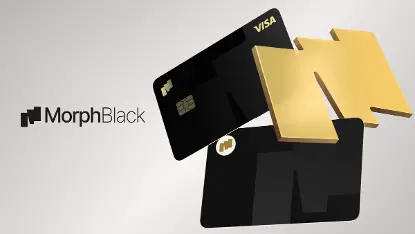
In terms of functional design, Morph Black NFT is officially defined as the flagship asset of the MorphPay ecosystem. Its holders will likely obtain the platform's future Morph Token airdrop and enjoy the allocation rights of the lowest complete dilution valuation (FDV) stage. At the same time, NFT will also link to multiple ecological projects including BAI Fund to bring airdrop incentives to users. Cardholders can also participate in on-chain deposits on the platform and obtain annualized returns up to 30%.
At the card equity level, the Morph Black card is a physical black gold card with 22 g. The cardholder can apply for the card after completing the KYC.The promotional rights include exempting the annual fee of about US$300 for traditional black cards and enjoying a handling fee of as low as 0.3% during the deposit and withdrawal process (depending on the exchange demand).The card has a single-day entry and exit amount of up to US$1 million, and will also come with a Singapore dollar bank account. At the same time, according to the platform's public information and the community discussion,The card will also link hotel, air ticket booking and private concierge services around the world, which may be supported through the Aspire VIP system, create travel and life supporting services similar to traditional high-end credit cards for crypto asset holders.
In addition, according to community and social platforms, Morph Black physical card may be built on the DCS (DeCard) issuance system. Its investor, Bitget, is rumored to have acquired most of DCS’s equity. Therefore, the card is most likely developed based on DCS’s Mastercard card. Some of the interests may come from DCS’s black card Imperium World Elite Card, and have a credit card mechanism.
According to the Morph team, a regular card version will be launched for a wider range of users in the future to expand its payment network and ecological penetration. Overall, Morph Black Card is one of the most symbolic card products on the market with "high-end finance", suitable for crypto-senior users who seek asset exaltation and equity combinable.
It is worth mentioning thatMorph just started selling Morph Platinum SBT a few days ago.By minting Morph Platinum SBT, users can secure their quota interests in the ecosystem under $50 billion FDV and unlock 50% of tokens at TGE. At the same time, SBT holders will receive a Morph Platinum Card, and the details of the card have not been disclosed yet.But it is also a U card that supports direct consumption of cryptocurrencies, give a one-year black card rights trial worth $300. Currently, the cost of casting Morph Platinum SBT is 0.3 ETH.
Infini Card: Virtual Cards that support OnlyFans
Infini has three different cards:Meow Card and Rabbit Card are core virtual card products, provides flexible on-chain payment and daily consumption solutions for different user needs. Currently, both cards are sold at a price of $9.9,No annual or monthly fees are charged, and it supports binding to Alipay and WeChat payment., is one of the few overseas virtual card products that are compatible with mainstream payment tools for Chinese users.
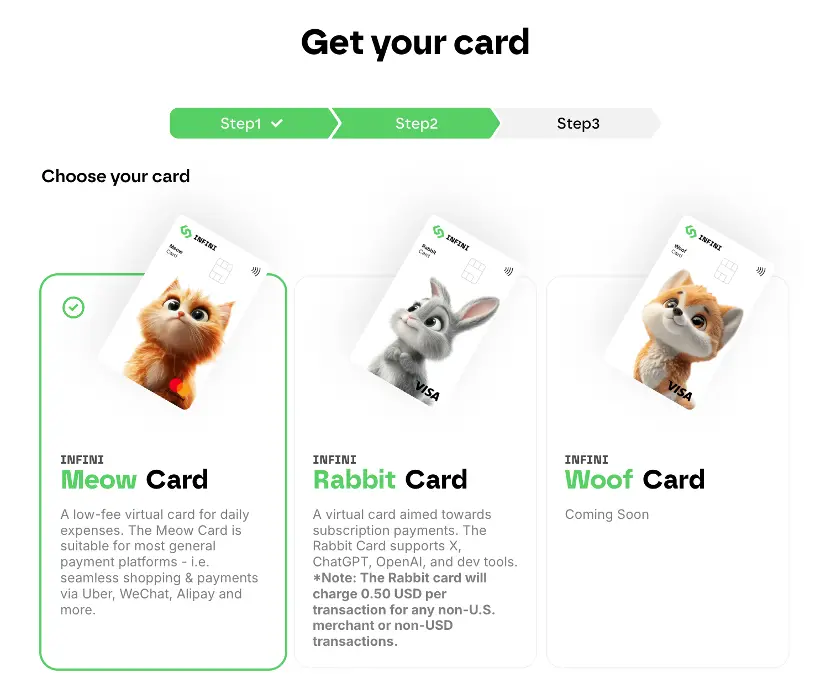
Meow Card belongs to the Mastercard network.More suitable for daily consumption scenarios denominated in RMB,Its transaction service fee is 0.8% of each consumption amount. When making payments in non-USD currencies, the system will automatically exchange currency.And charge a cross-border handling fee of 1% to 1.5%, the lowest is $0.01.
Rabbit Card uses Visa network, and its positioning focuses more on US dollar merchants, especially for a series of subscription-based platforms.It includes development services such as ChatGPT Plus, OpenAI API, Midjourney, Cursor, AWS, Google Cloud, Notion, Godaddy, GitHub, etc., and also covers mainstream consumer platforms such as Netflix, YouTube, eBay, and Amazon, basically covering all US dollar subscription services that need to be used in daily life.The basic service fee for Rabbit Card is also0.8% per transaction, but the fee for non-US merchants or non-US dollar transactions is fixed 1% plus $0.50,There is also a minimum rate threshold of $0.01.
Of course, Infini’s official website also considerately indicates to users, whether it is Meow Card or Rabbit Card.All support OnlyFans subscriptions.It has indeed put user needs into practice.
Although the two cards are virtual, they can be quickly bound to Alipay and WeChat Pay in actual use to achieve a seamless payment experience. As you can see on the official website, the Infini physical card product Woof Card is in preparation. It will support Apple Pay and Google Pay in the future, and have a wider offline payment capability, which is expected to further expand the user base.
Welfare cards for overseas residents: no-fee card, cash back card, "loan" card
Note: All the following KYC requirements are"resident", without limitnationality. That is, it can provideCertificate of local residence addressFor example, residents with water and electricity bills and credit card bills have different KYC difficulties according to the requirements of different card issuers.
Coinbase card: the only payment U card with "no handling fee, no loss"
As one of the world's largest and most compliant cryptocurrency trading platforms, Coinbase's debit cards have significant advantages in user trust and fund security. The card facesIssues by users with Coinbase accounts, especially for residents in the United States or European Economic Area (EEA).The applicant must have the legal residence status and real residence address of the location, and does not support KYC review in mainland China.
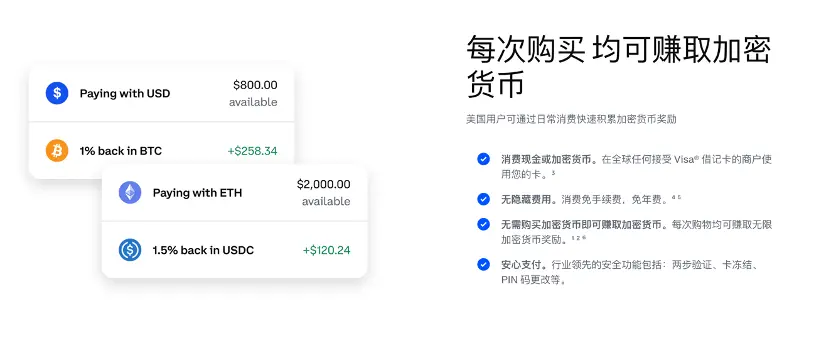
However, strict KYC is exchanged for high-end benefits:One of the biggest features of a Coinbase debit card is that it is exempt from all fees;Its "native asset payment" mechanism allows users to directly use stablecoins such as USDC for daily consumption. The platform also supports exchanging fiat currency to USDC with no fees, which greatly reduces the cardholder's asset conversion costs.Daily transactions and ATM withdrawals are also usually free of charge, providing users with an almost loss-free payment experience.In addition, the card is a VISA debit card, which can be used normally in merchants and services that support the network worldwide, covering a wide range of scenarios.
When users withdraw funds from Coinbase to a local bank account, if the account is located in a country or region supported by Coinbase, it can usually be quickly received, and the entire process is widely rated as "silky and stable". Additionally, Coinbase occasionally launches cashback activities for debit card users, although not very frequent, but is an additional incentive for long-term cardholders.
Overall, Coinbase debit cards are based on their compliance background, low-rate system and good fiat currency deposit and withdrawal experience.Become one of the most popular encrypted debit cards among European and American users.For users who are already in asset management on the Coinbase platform, this card is undoubtedly an ideal extension in the daily use of their on-chain assets.
Nexo Card: Cashback Credit Card for People Resident in Europe
Nexo Card byNexo, a crypto trading platform headquartered in France, with compliance licenses in the EU and the UK, launched,Services are only available to residents of the European Economic Area (EEA) and UK. Chinese passport holders need European address certificates and residence cards to be opened. This card not only supports crypto asset consumption, but is also a rare real one."Credit Card Model"U card, allowedUsers pay first and return later.It also supports cashback with a fair rate, and is one of the few dessert cards that can compete with North American credit cards.
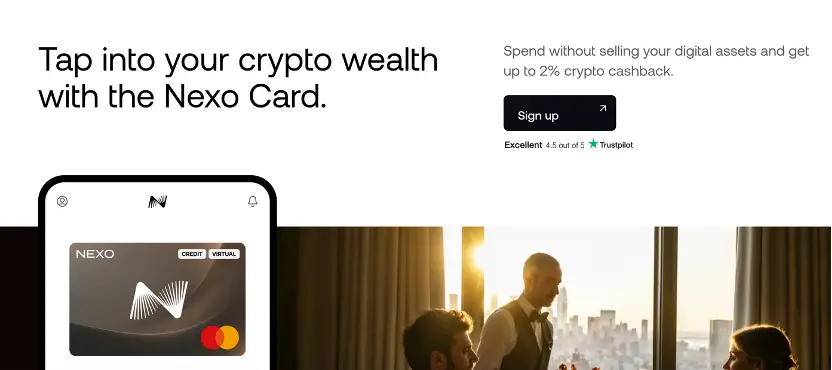
Nexo Card belongs to the Mastercard network and can be used by merchants on the Internet.
Nexo Card’s cashback mechanism adopts a dynamic reward model based on user asset allocation. Cryptocurrency cashback is available for all daily consumption.The basic cashback is 0.5% of the consumption amount, and the payment currency can be flexibly selected from NEXO Token or Bitcoin (BTC) within the platform.When the total amount of crypto assets held in the user account exceeds US$5,000, it will be automatically included in the Loyalty Program and divided into different loyalty levels according to the proportion of NEXO tokens in the asset portfolio, thereby obtaining a higher proportion of cashback incentives.
Specifically,The highest platinum-grade users can get up to 2% of NEXO token cashback or choose to return BTC at 0.5%;The gold-level users are 1% and 0.3% respectively; the silver-level users are 0.7% and 0.2% respectively; while the basic level is maintained at the cashback level of 0.5% NEXO or 0.1% BTC. This step-by-step reward mechanism encourages users to hold more NEXO tokens on the platform, thereby enhancing user stickiness and intrinsic value support for platform tokens.
In terms of expenses,Nexo Card has no annual and monthly fees, and the foreign exchange conversion fee structure is also relatively transparent.But it is not the same as the traditional conversion rate design. If the transaction currency is the same as the default currency of the card (euro or pound)There is no charge;For transactions with different card currency (euro or pound) than the merchant’s local currency, i.e., foreign currency transactions, the system will convert the transaction amount in currency.If the transaction is settled in Euro, Swiss franc or pound, the currency conversion fee is only 0.2%.; and the currency in other countries or regions is 2% rate. In addition, allForeign currency transactions conducted on weekendsThere will also be an additional 0.5% handling fee, which is a bit strange.
Combining its credit payment capabilities, dynamic cashback system and crypto asset-oriented membership model, Nexo Card has established a relatively mature bridge between the traditional financial system and the use scenarios of crypto asset, suitable for users who live in Europe and need cashback needs.
RedotPay: Payment-friendly solution in Hong Kong, Macao and Taiwan
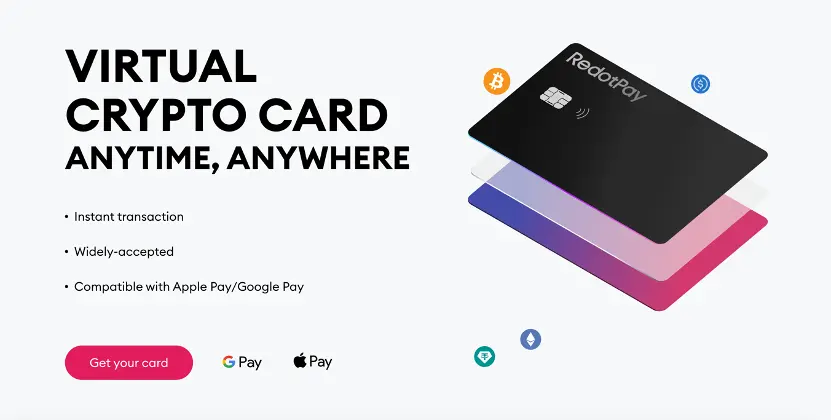
RedotPay is a Hong Kong-based crypto payment company that officially launched its cryptocurrency payment card at the end of 2023, aiming to meet users’ convenient needs for using crypto assets in real-life scenarios.The core positioning of this card is similar to the traditional debit card, When users consume, the system will directly deduct the equivalent amount of cryptocurrency from their bound account to pay for the consumption amount. The entire process does not require recharge to the fiat currency account in advance, nor does it involve the credit loan function. Unlike the card products with the exchange background introduced earlier, RedotPay is not a virtual currency exchange, but focuses on providing blockchain-based payment solutions, so its card products also focus more on the use path of on-chain assets themselves.
This card does not currently support registration and use by mainland Chinese residents, but can be applied for and consumed in multiple overseas areas. The overall cost structure is at a medium level.The comprehensive handling fee is approximately 1% to 3%.The specific fee rate depends on currency conversion and consumption scenarios.A highlight of the RedotPay card is its direct support for Binance Pay, users can complete recharge and settlement through the Binance wallet system, giving them certain advantages in the interoperability of on-chain ecosystem.
When it comes to card types, RedotPay offers VISA cards, which is relatively rare in the crypto card market. In addition, the card is exempt from an annual fee, which reduces the cost of long-term cardholding for users, but physical card applications require a one-time US$100 fee.
In terms of rates, Redotpay provides a complete rate table:

You can see it in it,The transaction rate for non-default underlying currencies is 1.2%, the ATM cash withdrawal fee is 2%, and the transaction fee is 1%.These fees do not include fees charged by trading platforms such as Alipay.
Overall, RedotPay cryptocard is aimed at overseas users with cross-border life or online consumption needs. It is suitable for users who want to use on-chain assets directly for daily payments and do not rely on centralized exchanges for asset custody. It is one of the few representative products in the cryptocard market that are currently taking the "light platform" route.
Decentralized project-based U-card series, focusing on self-custodial funds
MetaMask Card: Metamask Officially launched low-handling payment card
MetaMask Card is a lightweight crypto payment tool launched by crypto wallet giant MetaMask, which is mainly aimed atAlready have wallet users, aiming to directly extend on-chain funds into daily consumption scenarios. The card is currently in its early stage of opening.Registration is only open to residents in some countries and regions, including the United States (excluding New York and Vermont), the United Kingdom, EU member states, Switzerland, Mexico, Colombia and Brazil.Its global version has not yet been fully opened.

Metamask card also belongs to the Mastercard merchant network. It is reported that in the future, physical metal cards will be opened as airdrop rights.
In terms of asset support, MetaMask Card currently supportsUSDC, USDT and wETH three tokens, all funds must be stored inLinea network, users need to cross-chain the relevant assets to the chain for recharge. After recharge, the cardConnect directly to Apple Pay or Google Pay Realize mobile payment and can be used without a physical card. During use, the system will convert the selected crypto assets into fiat currency in real time during each purchase, and settle them into local currency. The conversion process is completed immediately when the transaction is initiated.
In terms of handling fees,When using stablecoins such as USDC or USDT to make payments,The gas fee for Linea network is only required to bear once, usually around $0.02; if non-stable coins such as wETH are used, an additional 0.875% on-chain swap fee is required.All fees will be displayed in the card background "Manage" module after the transaction is completed. Users can view detailed bills, including exchange rate, deduction amount and handling fees.
also,MetaMask Card offers 1% USDC cashback for all purchases, further improve the cost-effectiveness of users in the direct consumption scenario of on-chain assets. This cashback model and visual fee structure make this card very suitable for users who are familiar with DeFi and on-chain operations, especially those who already use MetaMask wallet as their main asset management tool.
1inch Card: A magical "loan" card that allows mortgage loans to be used for consumption
1inch Card launched by crypto aggregation trading platform 1inch is a crypto asset consumption card powered by Crypto Life and uses Baanx as a compliant deposit and withdrawal service provider. This card not only has regular on-chain payment capabilities, and through the "mortgage + lending" model, users provide more strategic asset consumption options.In terms of identity verification, the KYC program required by 1inch Card is similar to other products under the Baanx ecosystem.It is mainly open to compliant residents in the European Economic Area and the UK.Requires a local address proof.
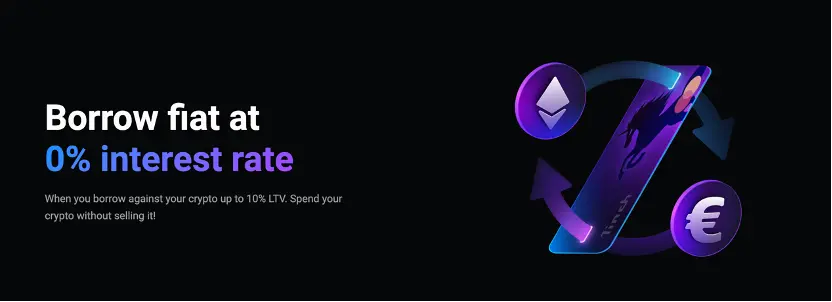
Unlike most crypto cards that directly consume assets on the chain,1inch Card allows users to lend stablecoins for daily consumption using BTC or ETH as collateral.Users can choose USDC, USDT or EURT as the lending currency and can set a loan cycle between 6, 12, 18 or 24 months. This lending model is especially friendly to users who are bullish on crypto assets in the long term. For example,When the price of Bitcoin is low, users can lend stablecoins to spend by staking BTC without directly consuming their own Bitcoin. When the price of BTC rises, users can choose to return stablecoins to redeem the higher value of original assets.This mechanism not only retains the future growth potential of assets, but also meets the actual liquidity needs.
Of course, stablecoin lending must have interest, but as long as the increase in mortgage assets can cover this part of the interest, the advantages of lending cards will be very obvious. According to the official website, during the loan period, the interest part must be automatically repaid every month, and the deduction operation will be automatically completed through the stablecoin wallet in the system. Once the loan and interest are fully repaid,The user will recover all collateral assets as is.
At the same time, the platform supports users to obtain a credit limit of up to 60% of the value of their mortgaged assets.
In terms of payment currency,1inch Card supports mainstream Layer 1 assets such as BTC, ETH, LTC, XRP, but Layer 2 network assets are not supported yet. When users consume, the system will automatically convert to fiat currency and complete settlement. The platform charging structure is relatively complex but clear:The card consumption fee is 2%, and the exchange between cryptocurrencies and the conversion of cryptocurrencies is 1.75%; if it is a withdrawal of crypto assets, the fee is 0.4% to 0.5%; if it is a withdrawal of fiat currency through bank transfer, 3.49% is required. In terms of card services, there is no annual fee or maintenance fee, but a €¥2.50 is required to withdraw cash from GBP, while a €¥3.00 is added to a 1.5% handling fee.
The above handling fees seem high, but they are not actually superimposed. In other words, direct card consumption is 2% plus potential foreign exchange conversion fees, and after converting it into fiat currency at a rate of 1.75%, you can directly consume in fiat currency.Overall, it is not much different from other crypto assets.
also,1inch Card provides 2% crypto cashback per purchase,Further improve the cost-effectiveness of daily use. Combining its collateral-based stablecoin lending capabilities, flexible maturity settings and widely supported asset types, 1inch Card is not only a consumption card, but also a microfinance toolkit for crypto asset holders, occupying a unique position in the increasingly integrated DeFi and real-world financial scenarios.













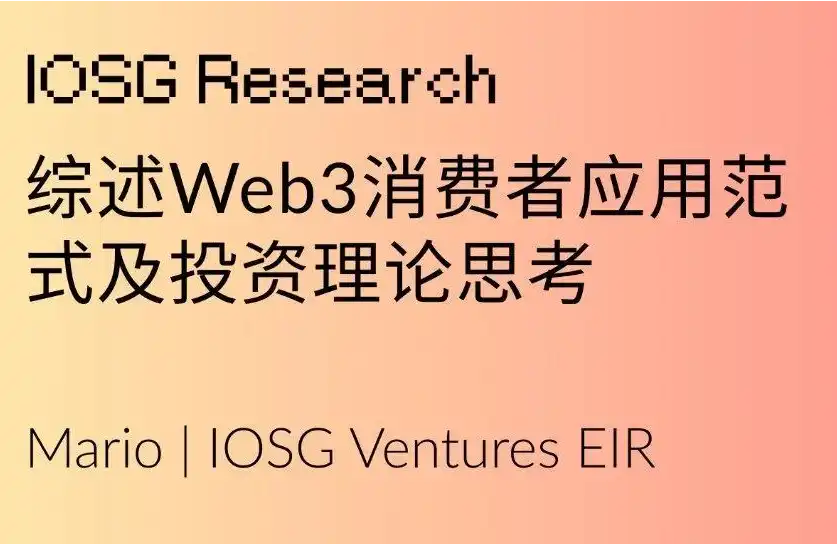
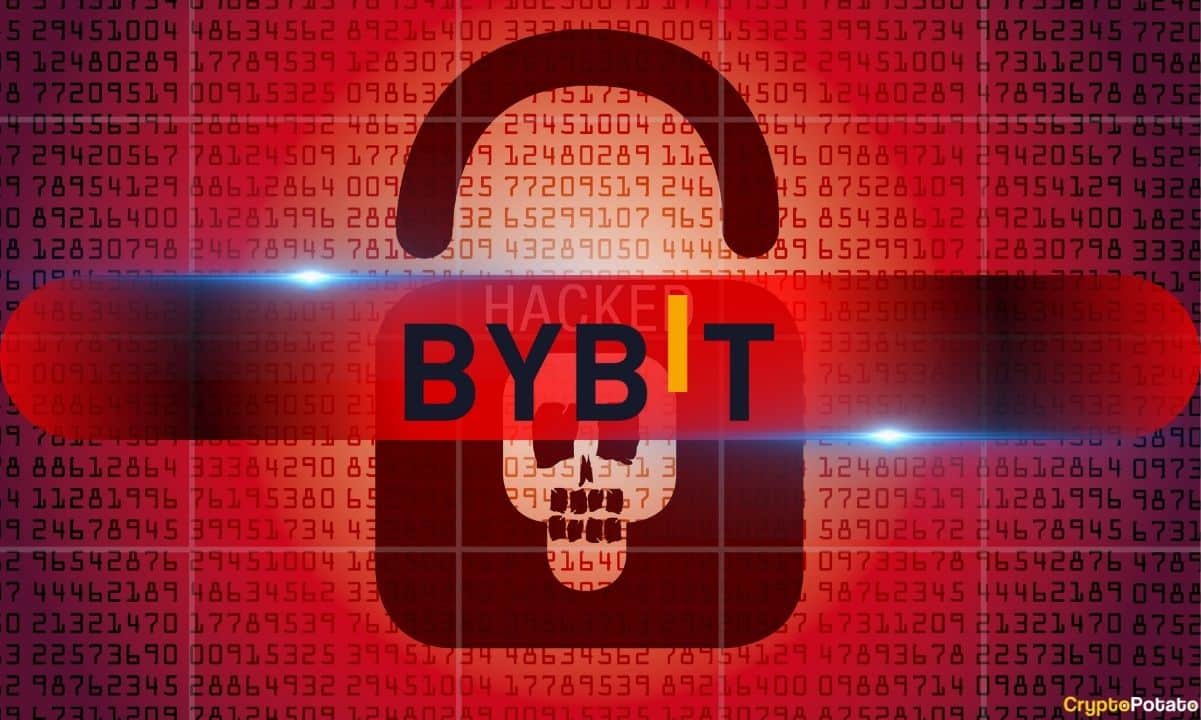

No comments yet